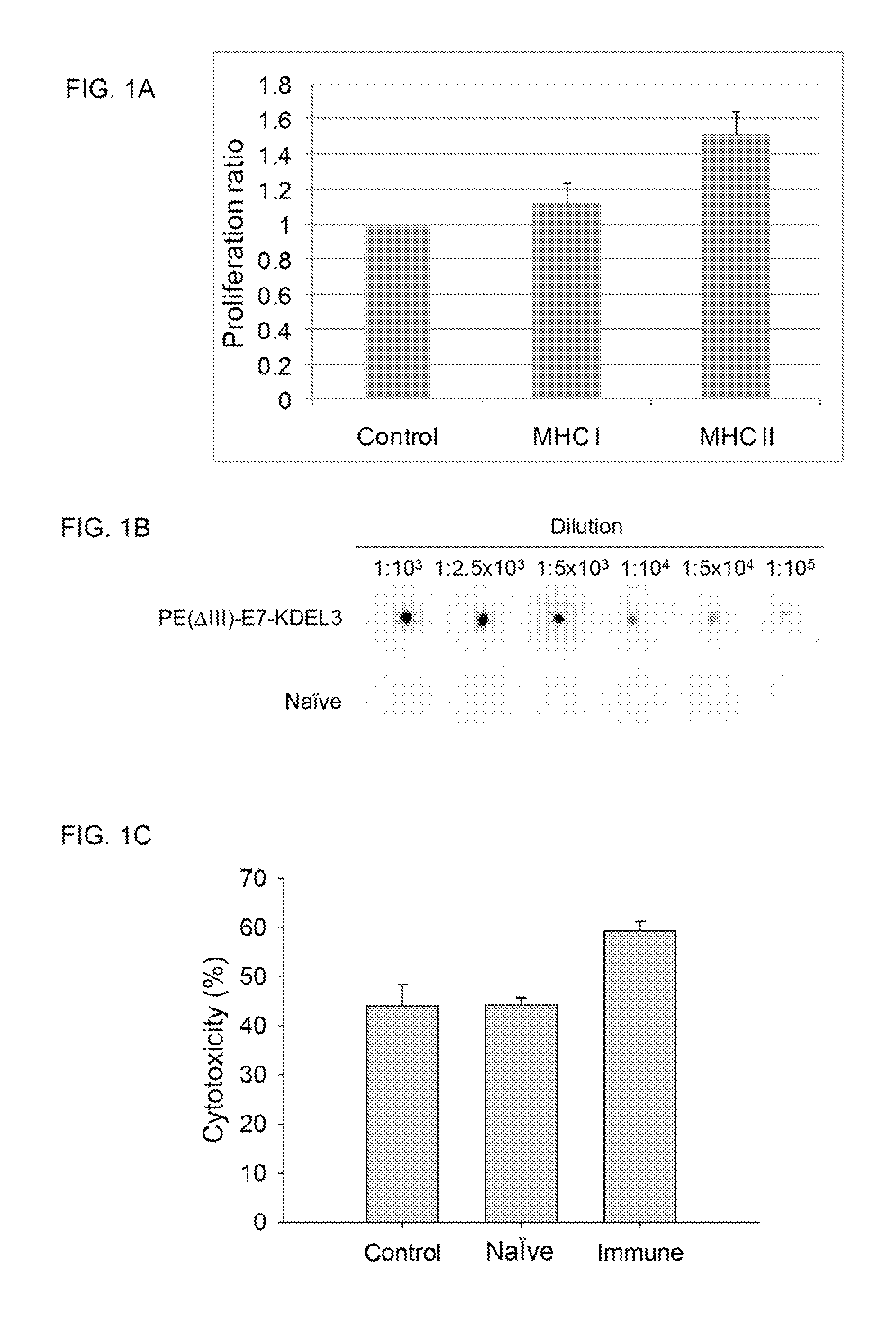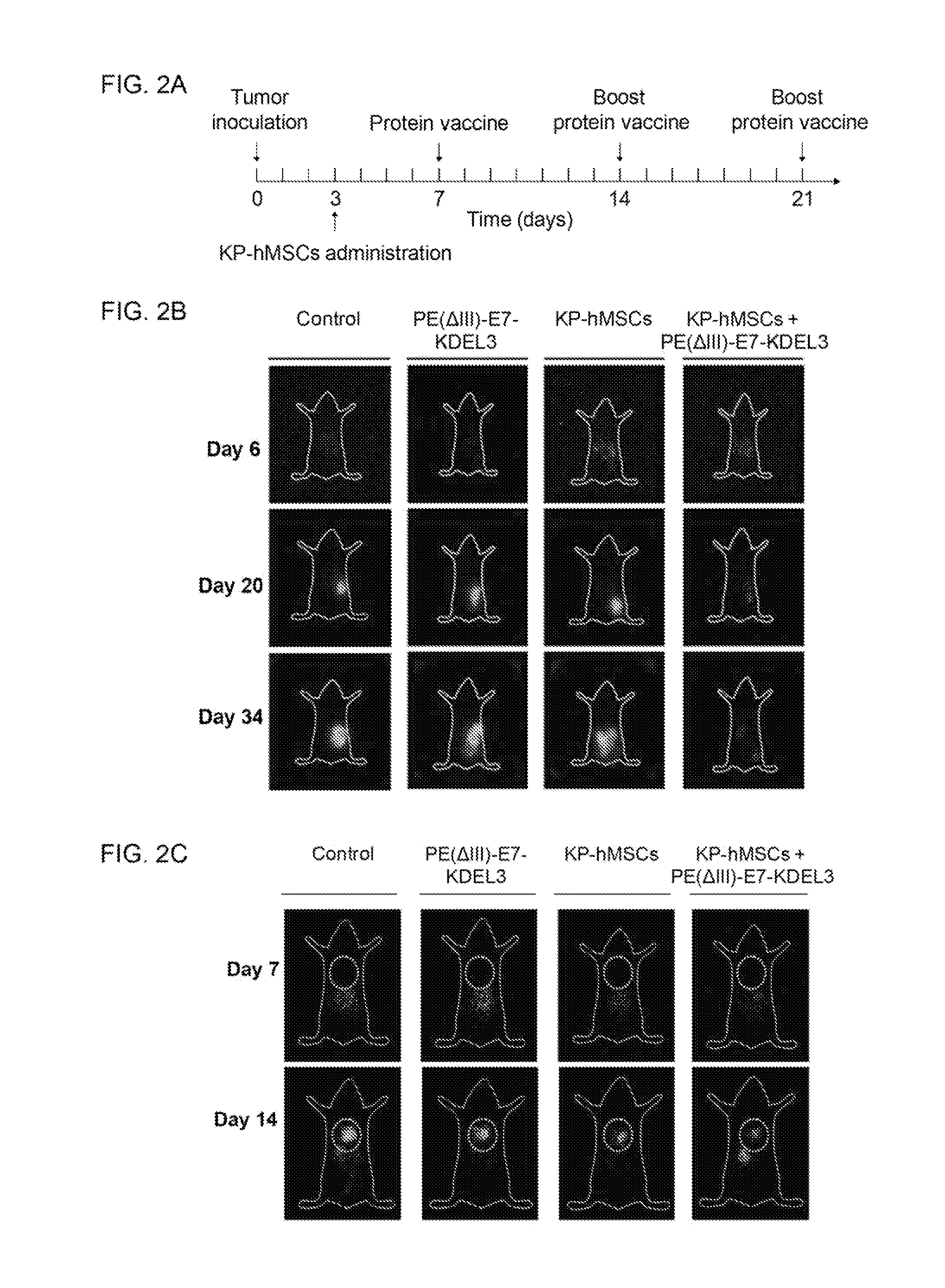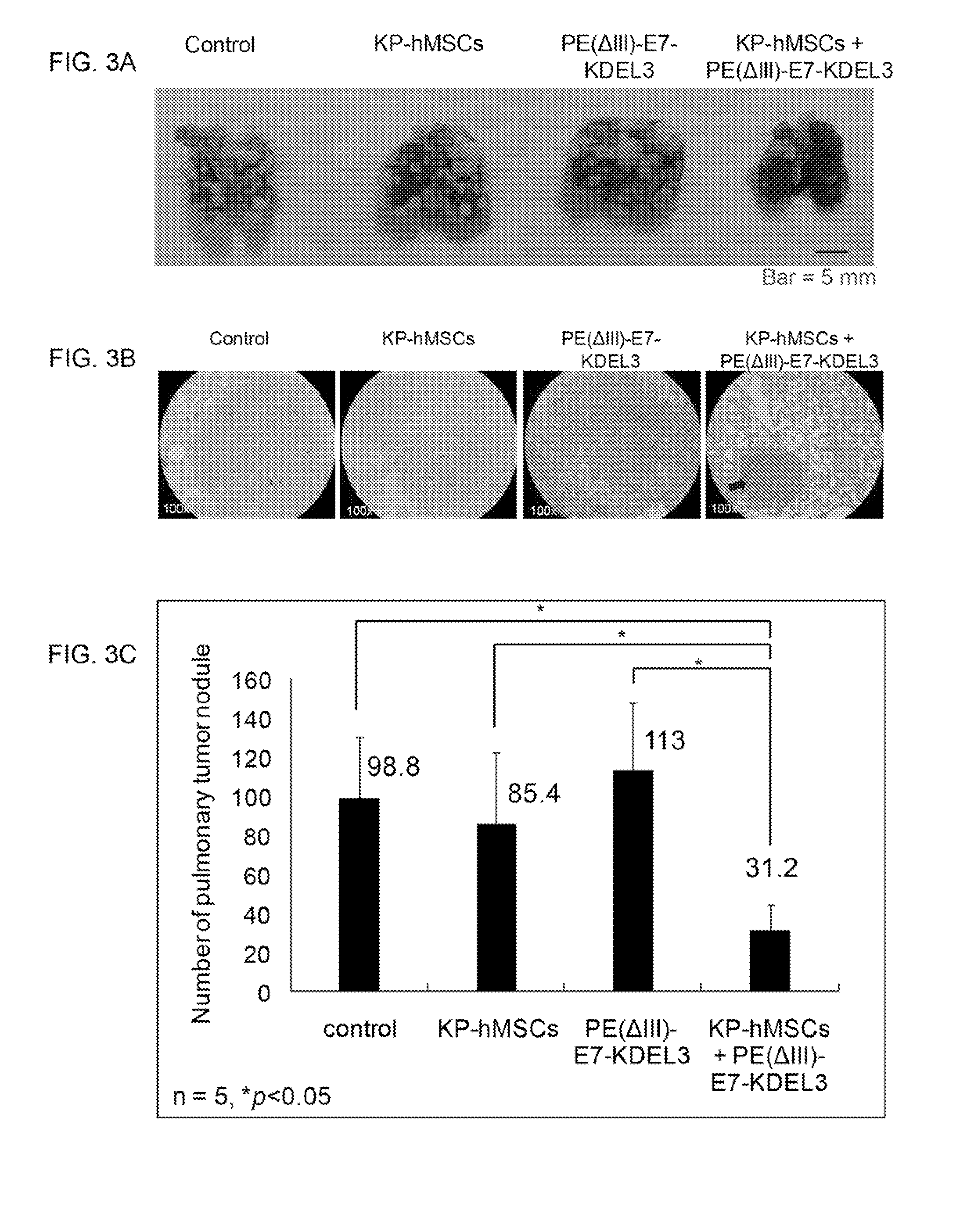Combination of protein vaccine and mesenchymal stem cells for treating cancer
a protein vaccine and mesenchymal stem cell technology, applied in the field of cancer vaccine therapy, can solve the problems of limited systemic chemotherapy and biologic response modifiers, limited systemic chemotherapy success, and limited success of systemic chemotherapy, so as to inhibit growth and/or metastasis of tumors, and inhibit tumor growth and/or metastasis
- Summary
- Abstract
- Description
- Claims
- Application Information
AI Technical Summary
Benefits of technology
Problems solved by technology
Method used
Image
Examples
example 1
E7 as a Dominant MHC Class II Antigen
[0086]To investigate the immunological response stimulated by the E7-fusion protein vaccine PE(ΔIII)-E7-KDEL3, splenocytes isolated from the vaccinated and naïve mice were incubated with an E7 peptide fragment containing MHC class I epitope (the amino acids 49-57; SEQ ID NO: 3) and an E7 peptide fragment containing MHC class II epitope (the amino acids 30-67; SEQ ID NO: 4), respectively. FIG. 1A shows the results of splenocyte proliferation assay in response to E7 peptide immunogen in vitro. Splenocytes from the mice vaccinated with PE(ΔIII)-E7-KDEL3 showed an increased proliferation in response to the E7 peptide containing MHC class II-epitope. After a 5-day incubation period, splenocytes cultured with the E7 peptide fragment containing MHC class II epitope exhibited a significantly increased proliferation rate, indicating that the fusion protein PE(ΔIII)-E7-KDEL3 could stimulate proliferation of E7-specific CD4+ T-cell precursors but not CD8+ T...
example 2
E7 Antibody-Dependent Cytotoxicity
[0087]Dot blot analysis was used to demonstrate the relative E7-specific antibody titer elicited by the E7-fusion protein vaccine. The results of Dot blot analysis indicated that serum from a mouse vaccinated with PE(ΔIII)-E7-KDEL3 contained E7-specific antibody, as shown in FIG. 1B.
[0088]Antibody-mediated tumor immunity can be achieved by complement dependent cytotoxicity (CDC) and antibody dependent cell-mediated cytotoxicity (ADCC). A cytotoxicity assay demonstrated that anti-E7 serum increased the incidence of cell lysis in NG4TL4-STK / KP-hMSCs co-culture. After incubation with the co-culture of NG4TL4-STK and KP-hMSC cells, sera from mice vaccinated with PE(ΔIII)-E7-KDEL3 induced more cell lysis than sera from naïve mice, as shown in FIG. 1C. The results indicated that E7-specific antibody mediated complement-dependent cytotoxicity.
example 3
Tumor Inhibitory Response to the Combination Therapy
[0089]Planar γ-imaging was performed for monitoring tumor responses to the combined treatment with E7-fusion protein vaccine and MSCs in an experimental cancer mouse model. The time course of the experiment design is illustrated in FIG. 2A. Briefly, mice were inoculated with NG4TL4-STK sarcoma cells on day 0 followed by intravenous injection of KP-hMSCs (stem cell line derived from human bone marrow) on day 3. Mice were immunized with the E7 fusion protein vaccine PE(ΔIII)-E7-KDEL3 seven days after the tumor inoculation and received boost shots 1 and 2 weeks thereafter.
[0090]In the subcutaneous tumor model, planar γ-imaging was performed after the s.c. inoculation of NG4TL4-STK cells. FIG. 2B shows representative planar γ-camera images from the subcutaneous tumor model. Images were taken 6, 20 and 34 days after s.c injection of 5×104 NG4TL4-STK cells in the right flanks. The signal intensity reflected the extent and relative growth...
PUM
| Property | Measurement | Unit |
|---|---|---|
| Cell death | aaaaa | aaaaa |
| Immunogenicity | aaaaa | aaaaa |
Abstract
Description
Claims
Application Information
 Login to View More
Login to View More - R&D
- Intellectual Property
- Life Sciences
- Materials
- Tech Scout
- Unparalleled Data Quality
- Higher Quality Content
- 60% Fewer Hallucinations
Browse by: Latest US Patents, China's latest patents, Technical Efficacy Thesaurus, Application Domain, Technology Topic, Popular Technical Reports.
© 2025 PatSnap. All rights reserved.Legal|Privacy policy|Modern Slavery Act Transparency Statement|Sitemap|About US| Contact US: help@patsnap.com



